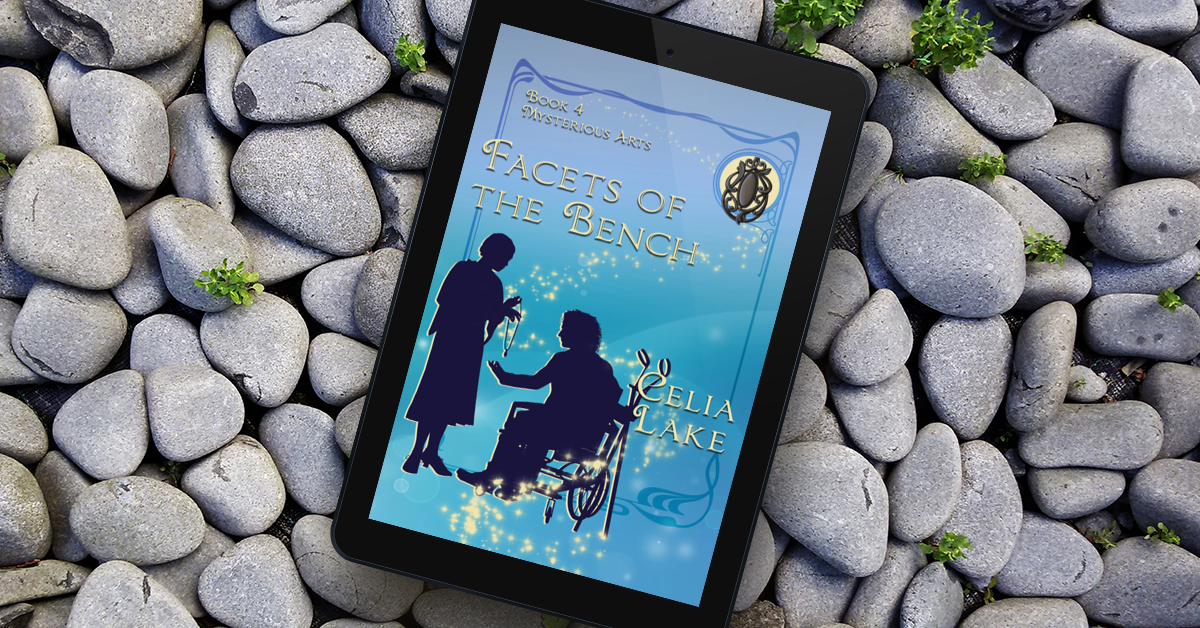You might have noticed that I have quite a few books where characters are living with chronic health issues, physical disabilities, magical disabilities, or ongoing mental health concerns (including war-related trauma as a relevant subcategory).
Those links go to pages with all the relevant books. You can find more details in the book’s blurb and specifics (if they might be spoilers) in the content notes section. Click, tap, or select that to get the details! You can also get all the content notes on one page if that’s easier for you.

Representation matters
One of the things I knew I wanted to do in my writing was to write stories about people like me and my friends having adventures, falling in love, and making the world a bit better. And by ‘people like me’ here, I mean including people who are disabled, who live with chronic health issues, and who are neurodiverse. Among other things.
Not all my characters are these things. I do have plenty characters who are neurotypical, ablebodied, radiantly healthy by whatever standard we’re using.
I do also write characters and situations involving disabilities we don’t have in our world. Those are disabilities caused by or related to magic and magical vitality, as well as some socially stigmatised abilities.
This year, I was so excited to write Facets of the Bench, featuring Griffin (seen in two previous books). Griffin’s an ambulatory wheelchair user, living with a magically-triggered autoimmune disorder. There aren’t nearly enough books focusing on people who sometimes walk and sometimes wheel.
How do we define disability anyway?
You might be familiar with the idea of a medical model of disability versus a social model of disability. One of the things I spend a lot of time thinking about are some of these differences (and the question of ‘is this thing actually a disability’?)
The medical model of disability is, roughly speaking, the idea that the disability means something is broken or doesn’t work right. The social model argues (sometimes very compellingly) that something is only a disability because society hasn’t decided to be accessible for that thing.
For example, for someone who is Deaf, being unable to hear is a disability in mainstream society. That’s because most people don’t know sign language. In communities where everyone signs (the same sign language, anyway), it’s not actually a disability not to be able to hear.
Another example is that neurodiversity isn’t necessarily a disability – or a thing people want to fix. Society can make it hard for people with specific needs due to neurodiversity to function comfortably or access things in a way that works for them. But those people might be fine with the way their brain works if they can avoid those situations, and prefer their brain like it is.
The reality is that the lines aren’t as clear cut as summaries want to make it. Some disabilities are things where people really would prefer not to deal with it. Ask many of my friends with chronic pain, for example! But also, better social supports for those disabilities would be great in the meantime, if a fix isn’t possible.
Experiences of disability change over time
Another thing I think about a lot is how the experience of disability changes over time. Sometimes that’s because tools or resources or understanding of a specific aspect changes. But sometimes that’s because the person comes to a different stage of understanding disability. (I know it’s happened to me with mine!)
I wrote about how experience of disability changes in August of 2024 in a public post on my Patreon. There’s also a post that month about disability history.
My own experiences of disability
As someone who is disabled, I write both about experiences I’ve had and some I haven’t. My stuff mostly has to do with chronic health issues that affect stamina, energy, focus, and ability to get things done. (One reason I write so much is that it does not involve leaving the house, which is extra draining for me compared to most people most of the time.)
I also work in an area of the intersection of disability and education, focused on disabilities I don’t have. I’ve been in my job for ten years this year, and I’ve had a lot of chances to hear and read about a wide diversity of experience, both today and historically. Some weeks, I do a lot of debunking people’s wrong assumptions about those disabilities or the people who live with them.
I’m deeply and painfully familiar with the third-shift work of managing multiple conditions, wrangling scheduling for appointments with different specialists, and advocating for what will let me work best. Some times in my life that’s worked pretty well (right now is pretty good). But I’ve also had stretches, months or years at a time when it’s been miserable and overwhelming.
When I write about disability, I have all those memories in my head. I may not know what it’s like to be a lower limb amputee in the late 1800s. But I can and do write from the experience of navigating the world in a body that’s struggling. About dealing with other people’s opinions about my health or competence (honestly, this is the most annoying one a lot of the time). About whether accepting help is a thing I can do – and whether what’s being offered is actually helpful.
The rest, well, that’s where research and listening and learning from other people with specific disabilities comes in. And that’s how we have stories about more people, with as accurate a representation of their experiences as possible.
